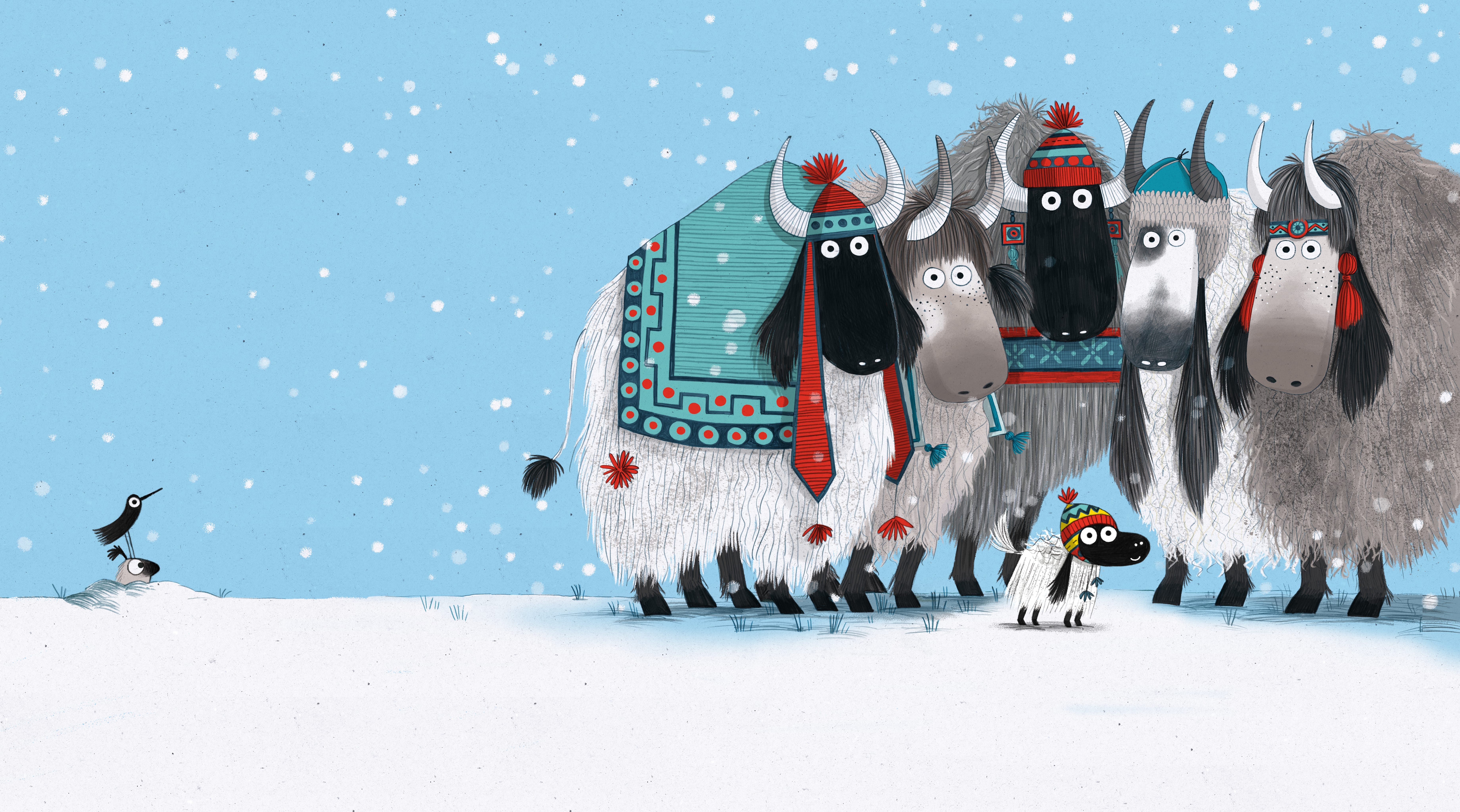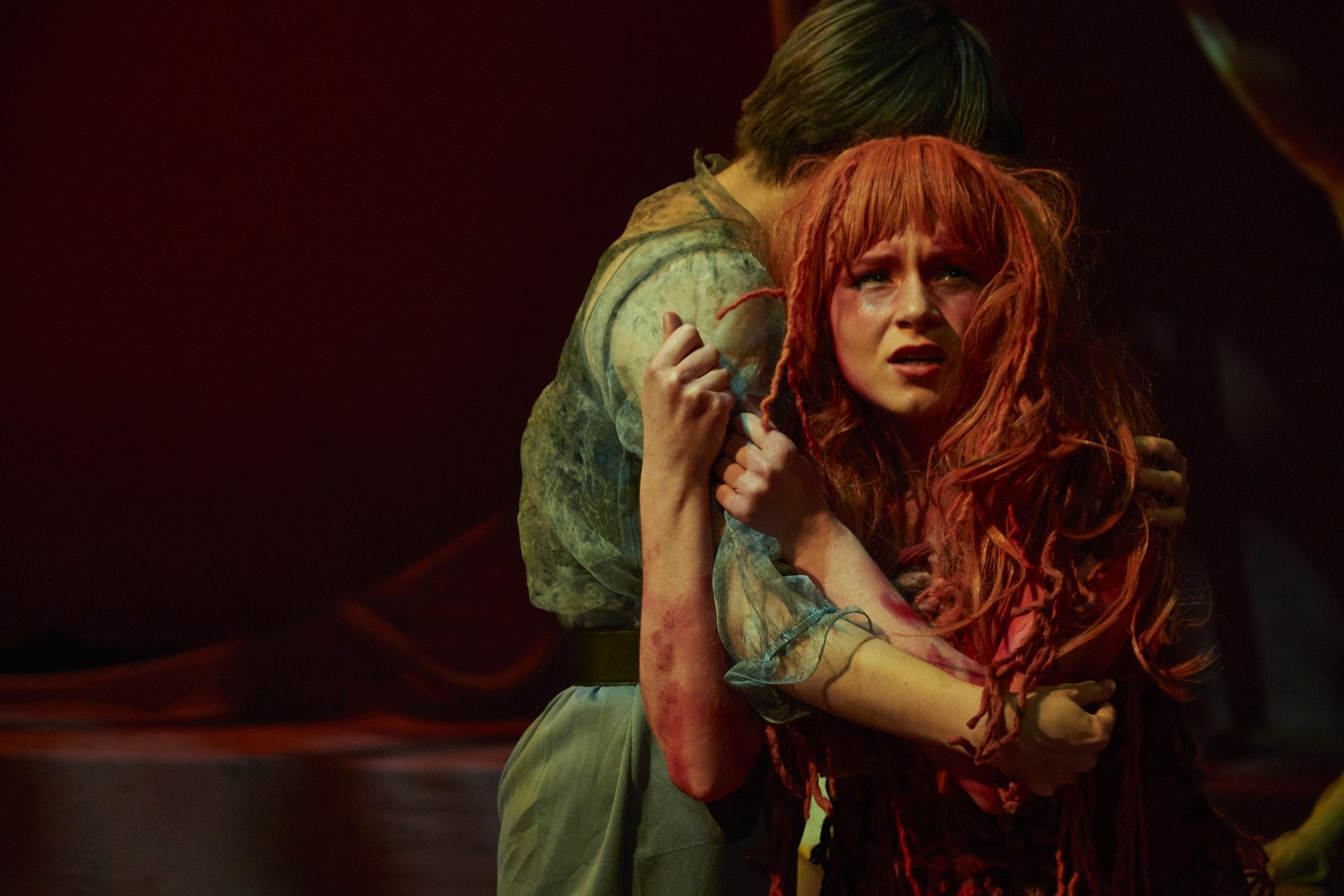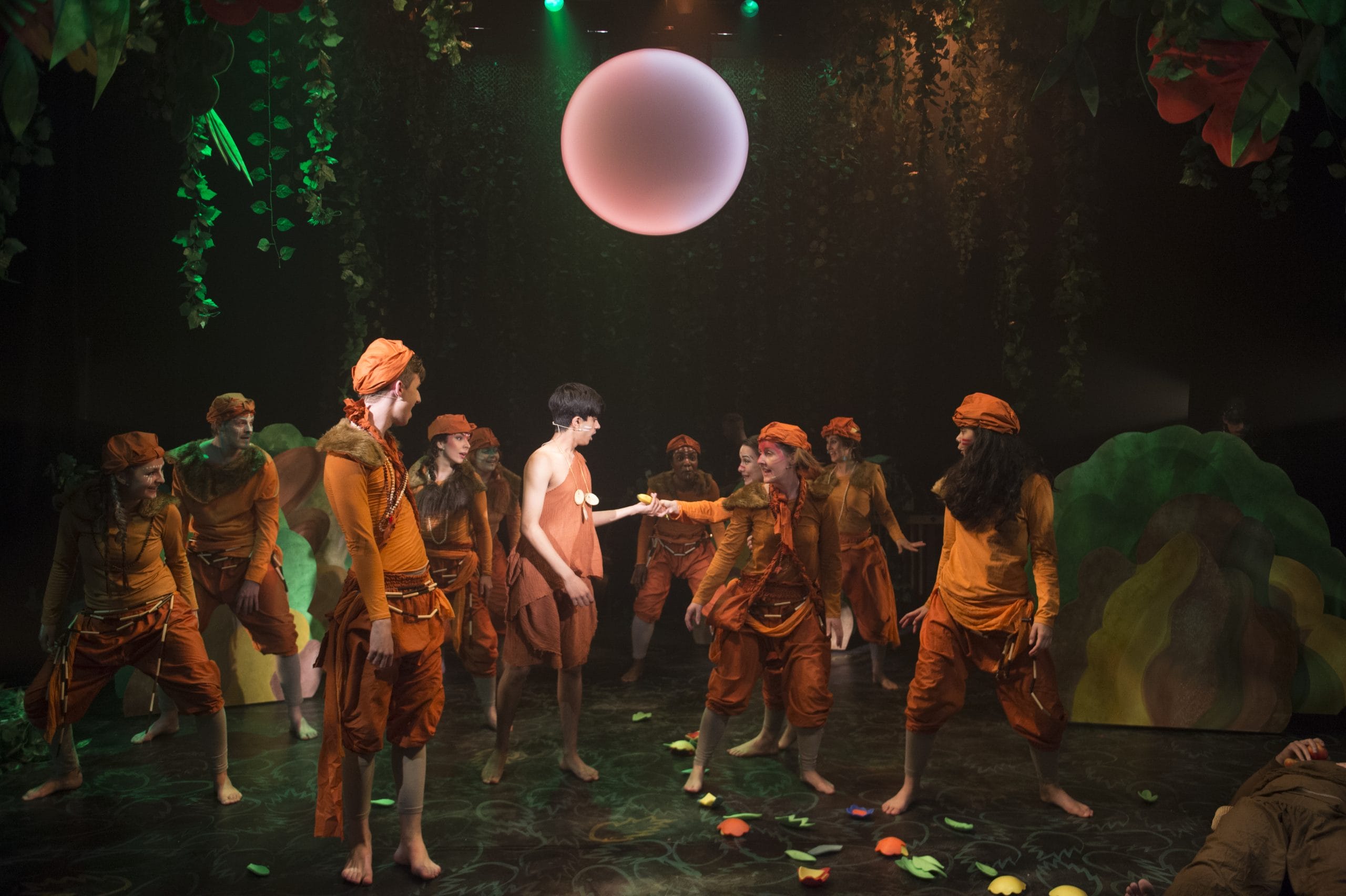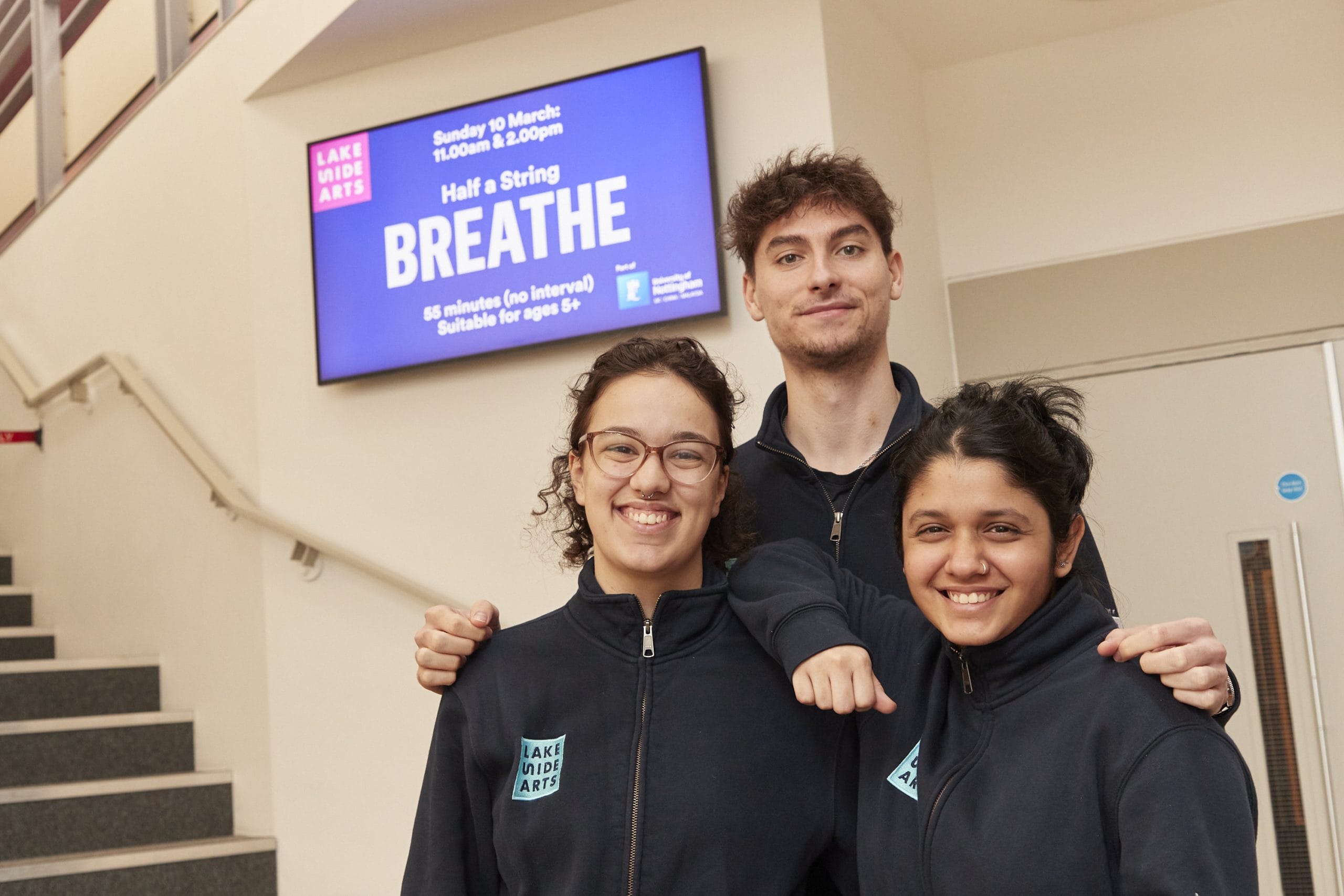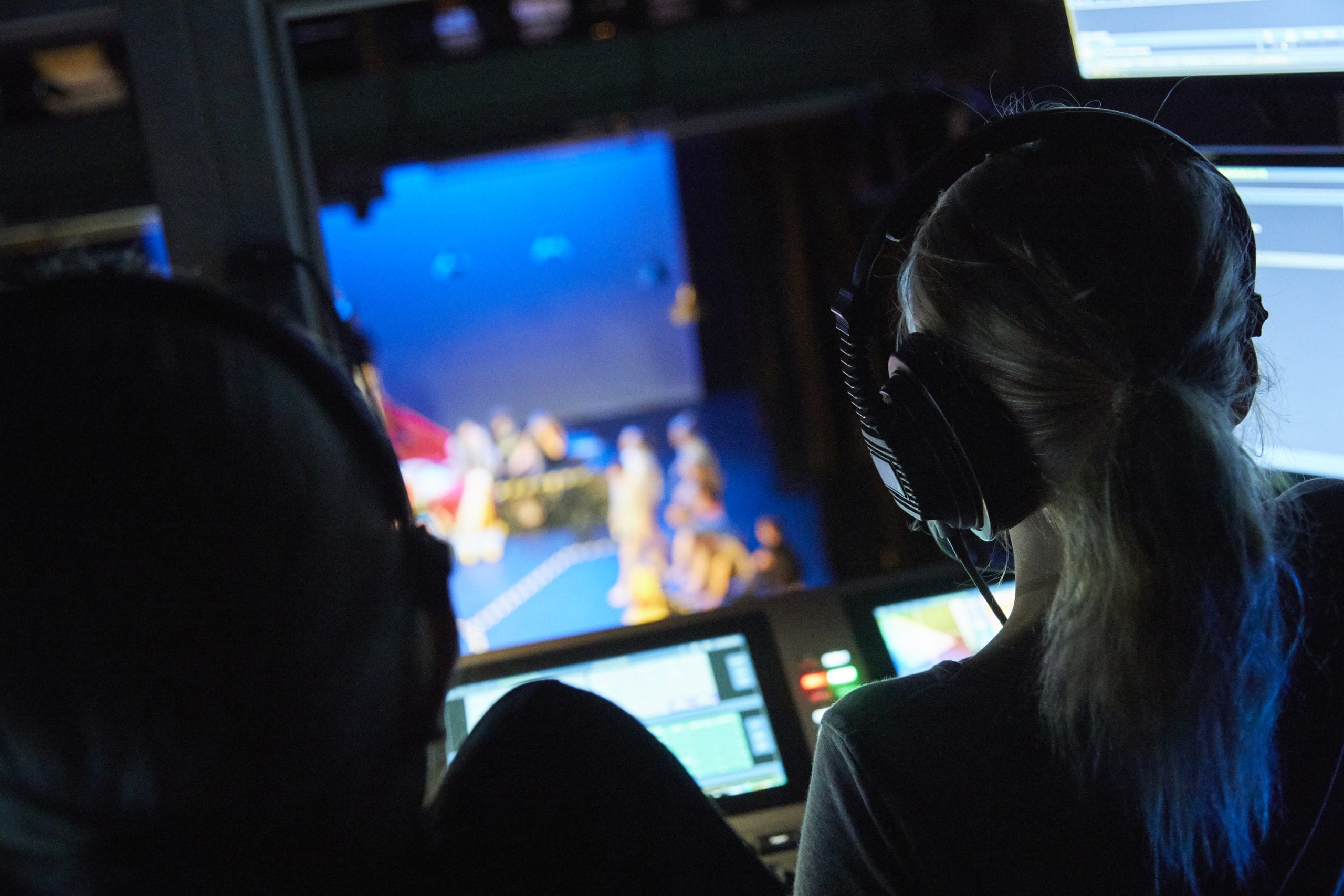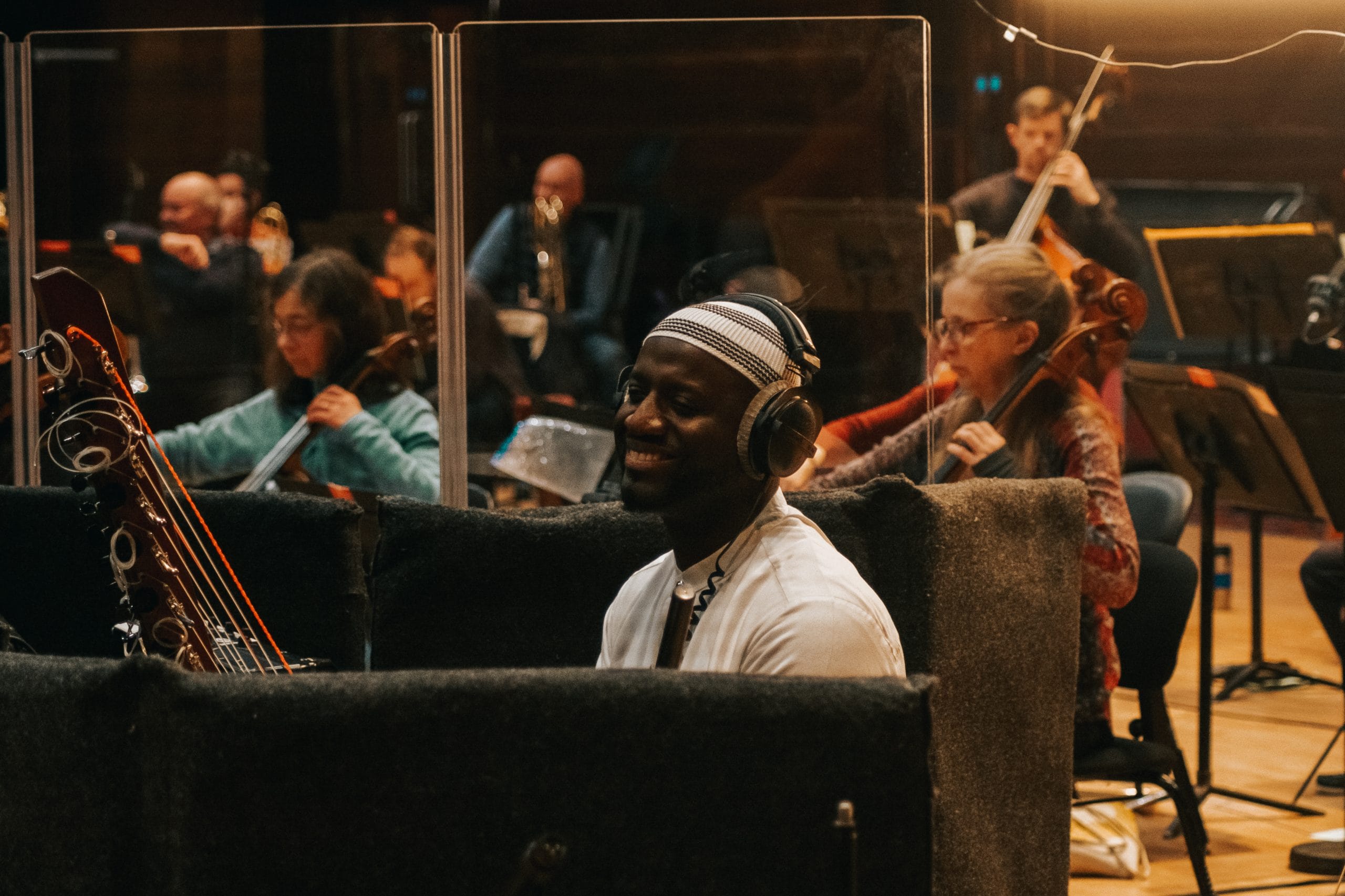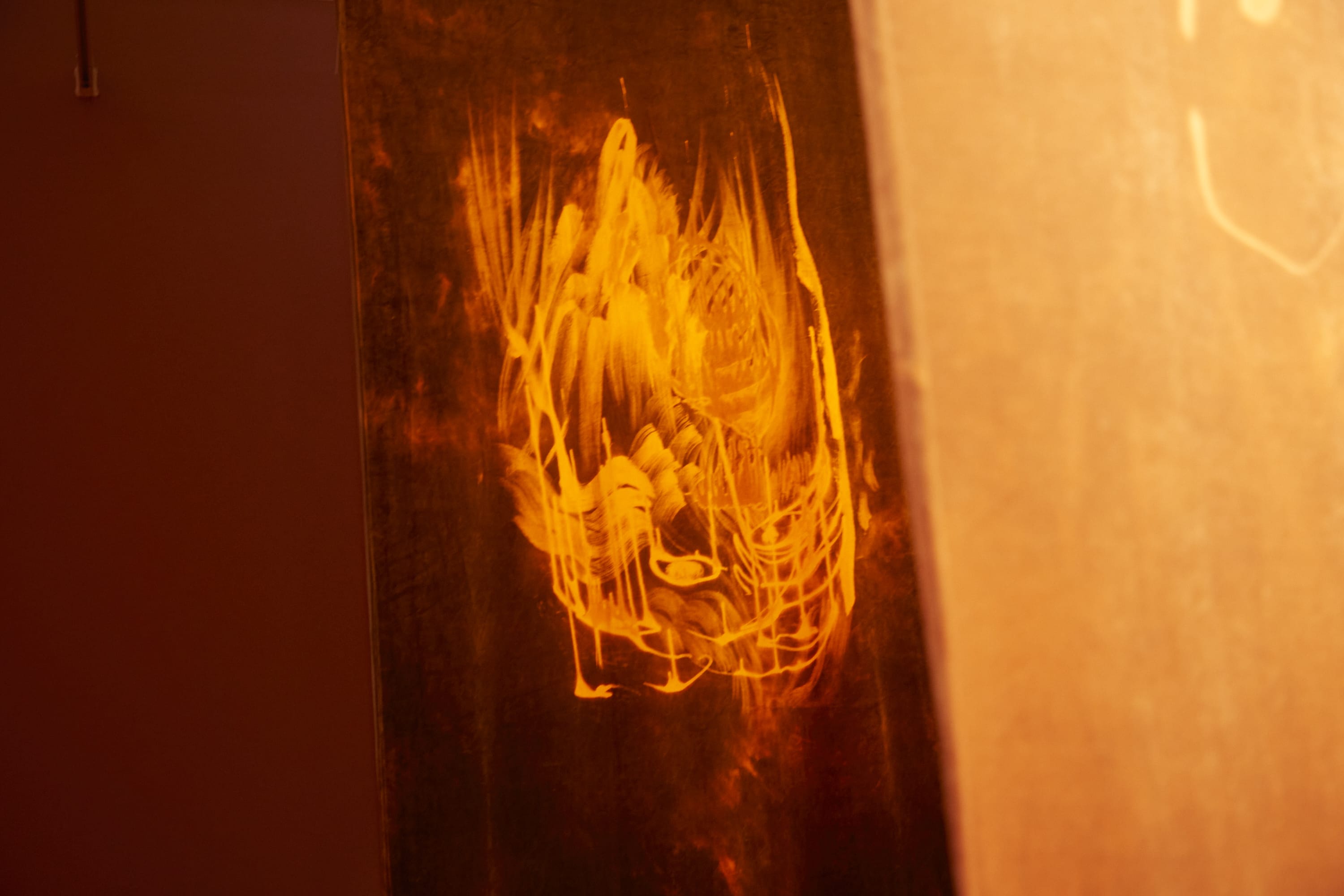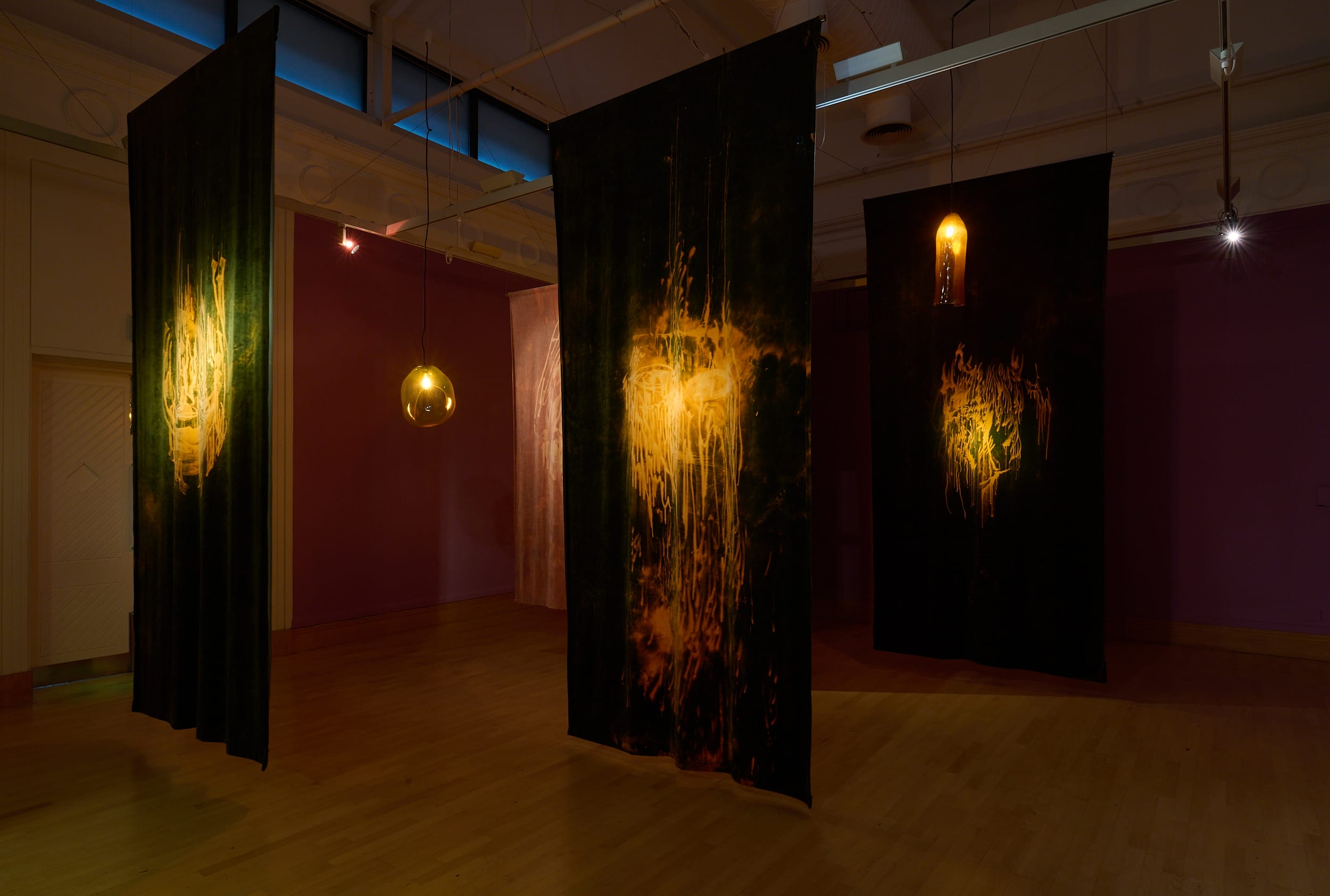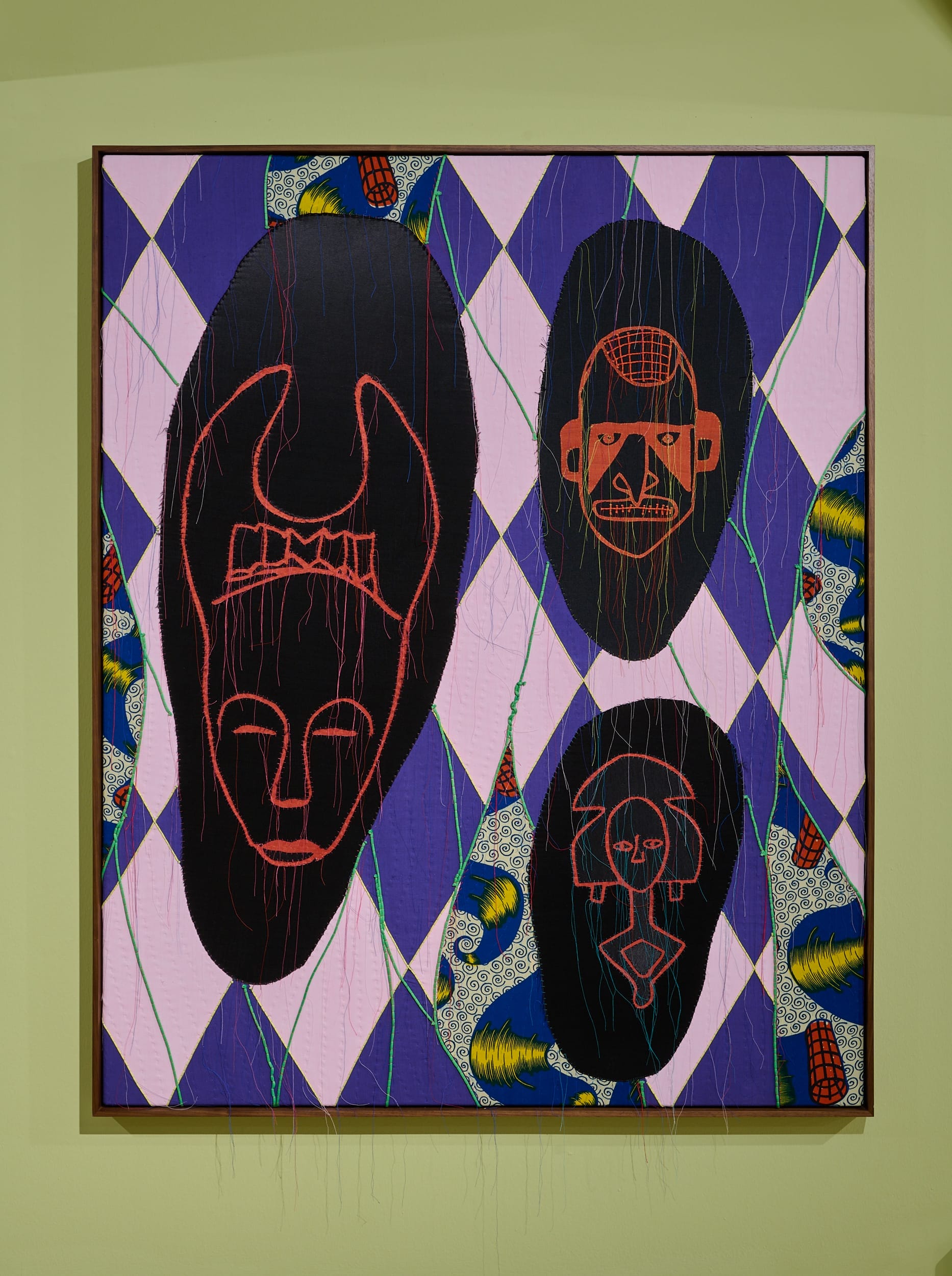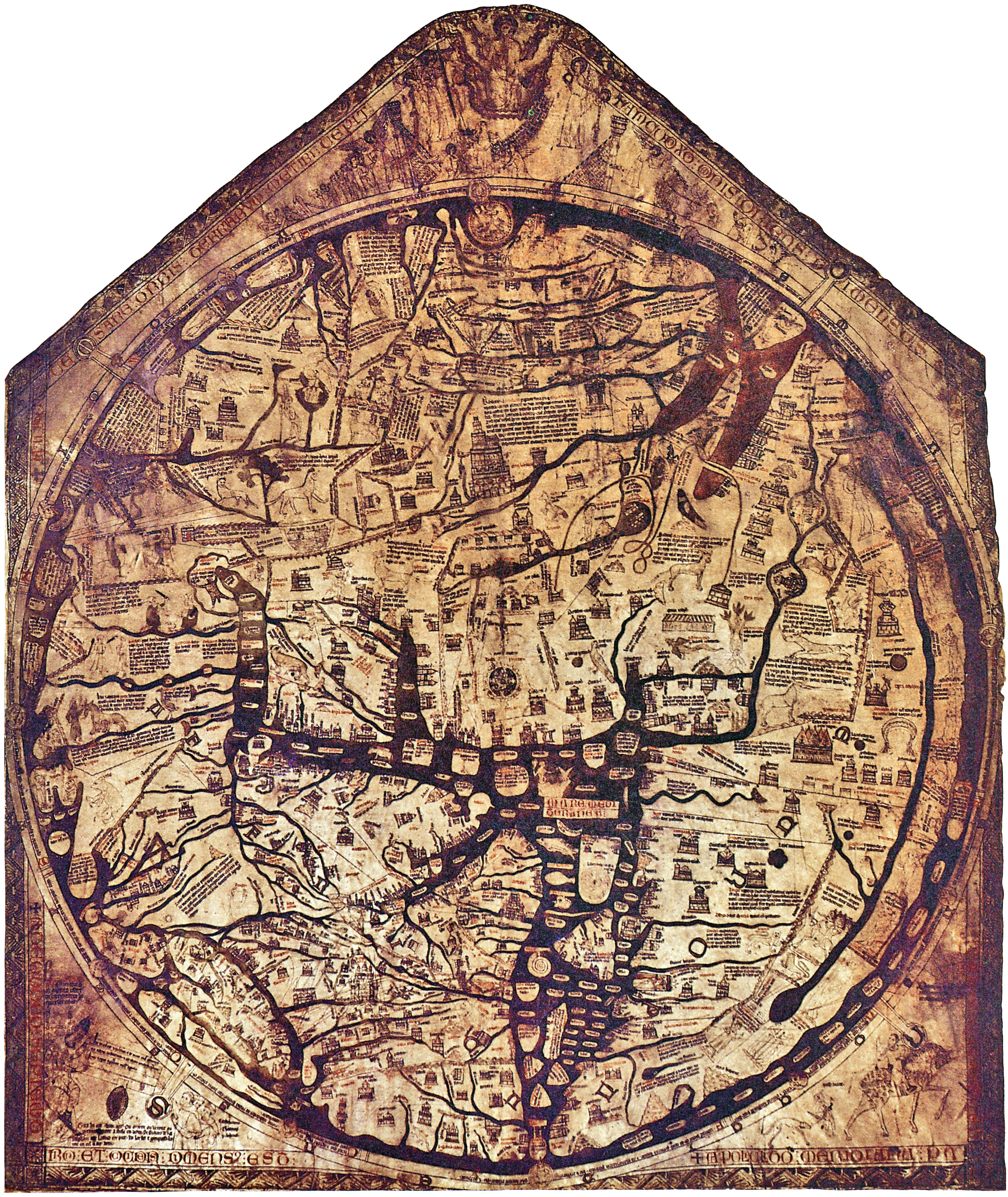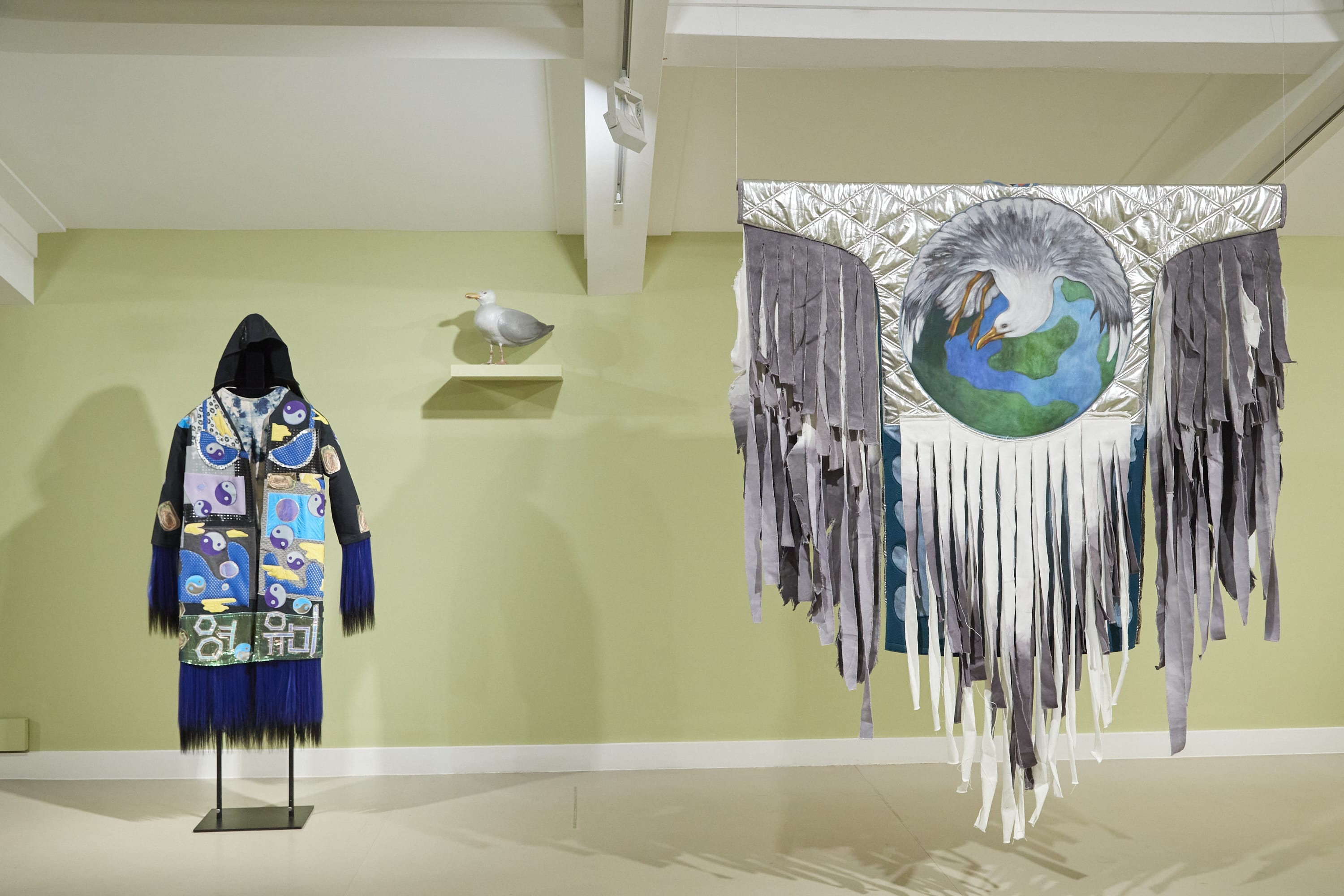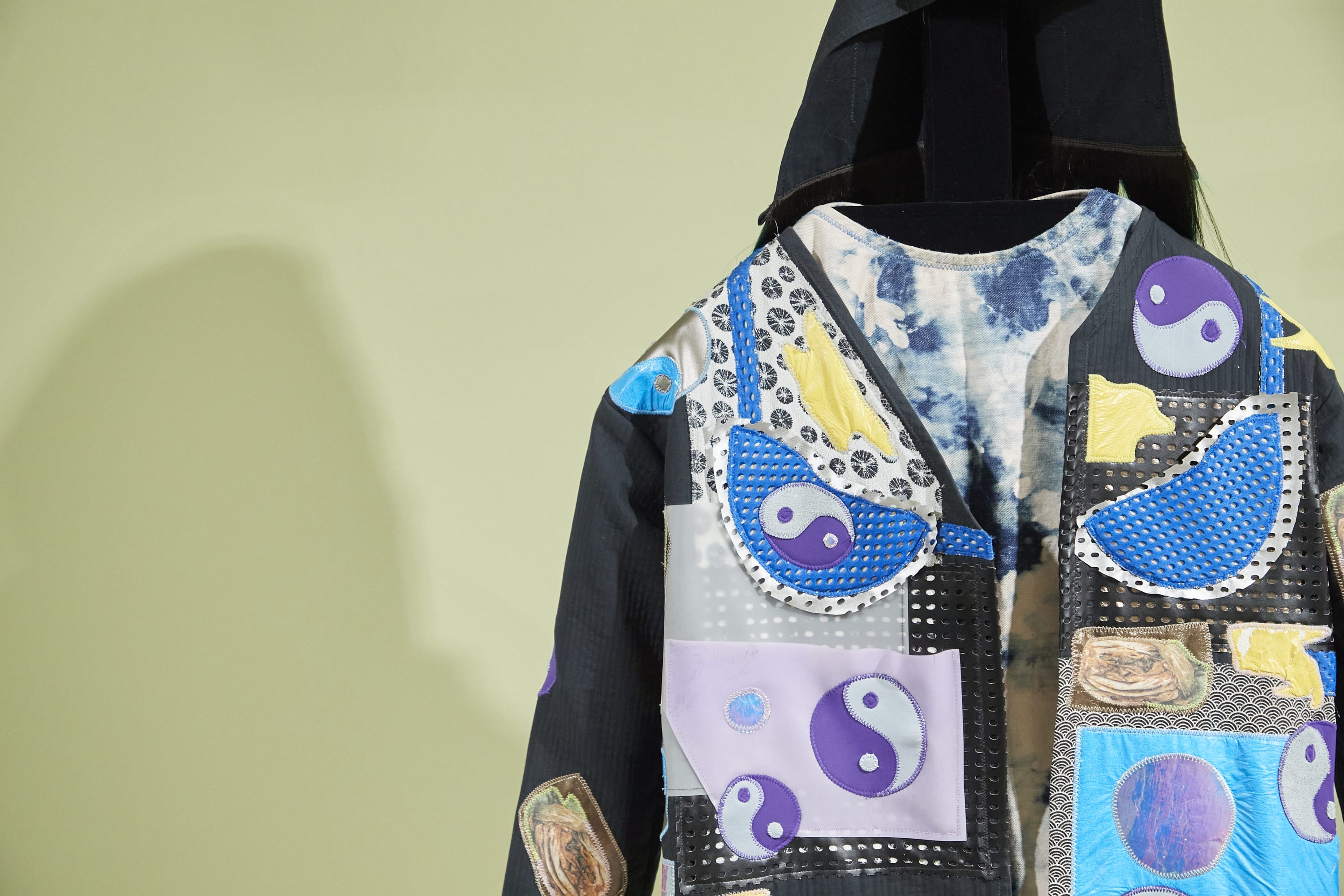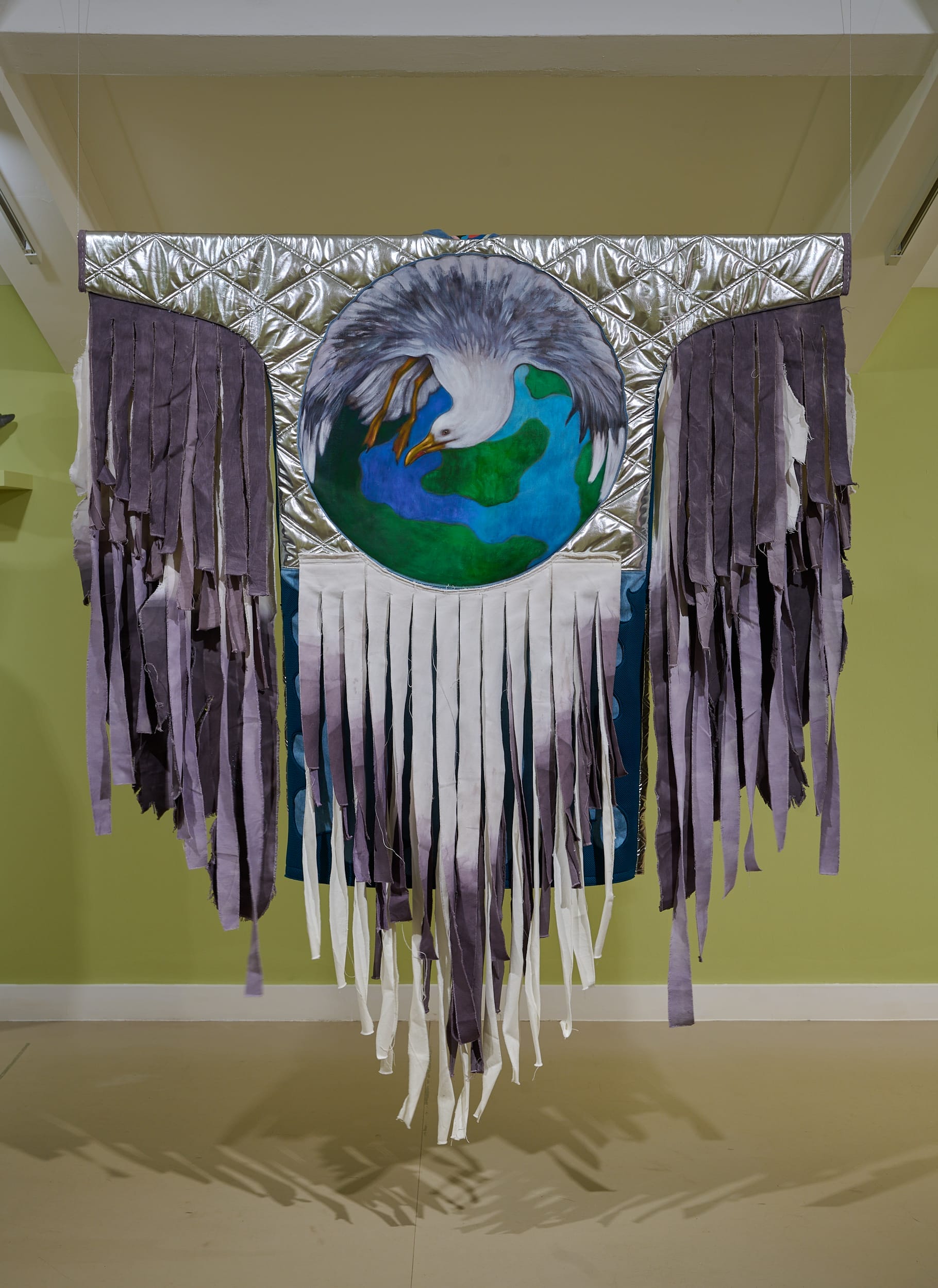Zadie Xa, Yinka Shonibare, and Paul Maheke explore the complexities of identity, heritage, and belonging. Learn more about the artists...
Material Worlds: Contemporary Artists and Textiles is a free group exhibition featuring radical and exciting contemporary artists using textiles to explore ideas of the body, identity, gender, race, heritage, myth and folklore. The potential of textiles as an art form has been pushed to extraordinary limits creating works that are theatrical, bold, unsettling and humorous.
PAUL MAHEKE
Paul Maheke gained a MA in Art Practice at l’École Nationale Supérieure d’Arts de Paris-Cergy (FR) in 2011. Throughout his career, he has had countless international exhibitions, from High Line Art, New York (2022), Collection Pinault, Paris (2021), Vleeshal Centre for Contemporary Art, Netherlands (2018,) to the Tate Modern, England (2024).
Maheke incorporates multiple mediums and media into his body of work, with video, sound, installation and dance, combining to create utterly absorbing and stirring pieces.
Paul Maheke’s work examines ‘what’s absent, what’s left untold, what’s left unseen.’ This particularly engages with marginalised bodies, narratives and history, which are often exiled from the visual gaze. This is often achieved through playing with imagery of ghosts, spirits and the distinctly non-human. With these spectral impressions, the artist establishes a sacred middle ground, between the tangible and intangible, where he is able to reach a certain prophetic ascendance devoid of restrictions. Maheke also aims to counteract the dominant systems of discourse and understanding that depend on visibility and legibility as the ultimate forms of truth, value and/or power. Simultaneously, he proposes the idea, influenced by theorists Édouard Glissant and Audre Lorde, that racial, gender and sexual inequalities could be counteracted by refusing to be fully visible and therefore understood.
Another recurrent artistic choice, particularly visible in his We Took a Sip from the Devil’s cup in Material Worlds, is the invocation of darkness and light. Darkness, inherently hides and masks, rendering things invisible; then light through the forms of the handblown glass lamps, is used to pointedly illuminate specific chosen elements, making it distinctly purposeful and empowered.
Maheke’s installation We Took a Sip from the Devil’s Cup brings together a series of drawings bleached into fabric, with handblown glass lamps. The spectral drawings are loosely based on a tasseography session undergone by the artist: a divinatory reading of patterns in coffee sediment. The glass lamps allude to amber, a receptacle for memory that holds ancestral knowledge. Both these elements engage with the realm of the invisible, supporting Maheke’s belief that ‘sight is an impairment to our deep understanding. It prevents us from accessing what lurks in the shadows.’
YINKA SHONIBARE
Yinka Shonibare is one of Britain’s most accoladed and treasured artists, and when you see his body of work you can understand why. His textile pieces expertly combine European and African aesthetics to create pieces that challenge notions of colonialism and identity.
Yinka Shonibare gained a BA in Fine Art from the Byam Shaw School of Art, London, and then a master’s in Fine Art at Goldsmiths College, London. His career has been exceedingly impressive, enjoying national and global recognition at a level most can only aspire to. He was shortlisted for the Turner Prize (2004), where he won popular public opinion. The same year, he was awarded an MBE and then, over a decade later, was further awarded a CBE, due to his vast contributions to the British art scene. In 2010, he was commissioned to produce the public art piece Nelson’s Ship in a Bottle, which was displayed on the Fourth Plinth in Trafalgar Square, London.
At the forefront of the majority of Shonibare’s work is the exploration of cultural identity, colonialism, and its modern-day legacy. His work often points to the inextricable relationship between Africa and Europe, their overlapping economic and political histories and how this continues to affect issues of identity and belonging. A common way he initiates this investigation is through combining Western and African art aesthetics, with imagery or material synonymous or evocative of this past colonial legacy. For example, he often depicts artefacts and ritualistic objects stolen by the British museum, like the masks seen in Abstract Spiritual XI. This particularly serves as a questioning of what our collective contemporary identity looks like today.
His textiles series the ‘Creatures of the Mappa Mundi,’ of which two pieces are currently displayed at Lakeside Arts, particularly draw on these themes. Shonibare was asked to produce a reinterpretation of this identically named iconic medieval world map. The original had attempted to piece together the world, depicting towns, foreign peoples, animals, myths and biblical scenes to produce this somewhat mythologised, eroticised and ignorant version. Yinka Shonibare was particularly drawn to the depictions of fantastical, strange creatures, in which he identified the underlying concept of otherisation. He reimagined his own versions, pointing to the evident parallels with the present; the historical pattern of racial dominance and xenophobia, particularly intersecting with hierarchical power structures.
Shonibare also notes a major secondary feature of his work, describing it as dealing with: “Two of the most pressing concerns of our time, environmental protection and immigration.” The use of extinct, legendary creatures acts as a warning of our own hubris and the potential of our own extinction should we should not prioritise caring for the environment.
Yinka Shonibare’s disciplines have spanned painting, sculpture, photography, film and embroidery. However, textiles became a particularly favoured medium for conveying his focus on colonialism and identity, in large part due to Dutch wax printed cotton textiles. Since 1994, he would purchase this quintessentially ‘African’ fabric from Brixton market to incorporate within his work. Despite this perception, they are actually a European invention, inspired by Indonesian batik designs and later sold to British colonies in West Africa as ‘African print.’ Shonibare discusses the material: “They prove to have a crossbred cultural background quite of their own. And it’s the fallacy of that signification that I like. It’s the way I view culture – it’s an artificial construct.” Used in conjunction with British iconography, fashion and art; it portrays a ‘culture clash’ and the hybridity of culture and identity. It also evidences reclaimative power as despite its origins, following the 1960s it became a signifier of African identity and independence.
Unfortunately, at the age of 18, Shonibare contracted transverse myelitis, which has led to increasing paralysis. The disease has now advanced to the point where he is unable to create the works himself; however, he still remains a conceptual artist, using assistants to create his artist visions. He went on to become an arts development officer for Shape Arts, ensuring that the organisation was accessible to all.
Zadie Xa
Born in 1983 in Vancouver, Zadie Xa is an artist whose boundary-crossing practice has earned international acclaim for its rich exploration of identity, mythology, and the diasporic experience. After earning her BFA at the Emily Carr Institute of Art and Design in 2007, Xa spent several years living in Madrid before relocating to London to complete an MA in Painting at the Royal College of Art in 2014. Since then, she has exhibited widely, with major solo and group presentations at institutions such as the Whitechapel Gallery (London), Remai Modern (Canada), and the National Gallery of Canada, among others. Xa now lives and works in London, where her immersive, narrative-rich works continue to challenge and expand notions of culture, belonging, and the self.
Xa’s multimedia practice spans painting, textiles, sound, performance, moving image, and installation, often combining these elements into fully immersive environments. Central to her work is collage and assemblage, both in technique and concept. She cuts, layers, and stitches together a broad range of references: from Korean shamanic rituals and folk narratives to street fashion, science fiction, and ecological theory. Hand-sewn fabrics, synthetic hair, dyed leather, and theatrical costuming all appear in her work, used to construct complex characters and speculative worlds that blur the line between fantasy and cultural memory.
At the heart of Xa’s practice lies a deep engagement with diasporic identity, ancestral knowledge, and worldbuilding. Drawing from her Korean heritage and experiences within the global diaspora, Xa uses storytelling as a strategy to reimagine erased or marginalized histories. Her interest in shamanism, interspecies communication, and speculative fiction fuels a vision of the future that is mystical and politically charged. Marine ecologies, in particular, appear frequently as metaphors for migration, fluidity, and the unknown; a way of thinking through homeland not as a fixed origin, but as something shifting, multiple, and submerged. Her work questions dominant cultural narratives, offering instead a polyphonic, embodied, and cosmological approach to identity.
Two standout textile works, Three Thousand and Thirty High Priestess of Pluto (2016) and Seagull (2020), exemplify Xa’s imaginative and material strategies. Both pieces are meticulously assembled using synthetic hair, dyed leather, and stitched fabrics, transforming soft materials into powerful narrative forms. Three Thousand and Thirty High Priestess of Pluto depicts an imagined spiritual leader from a speculative future, suggesting a fusion of shamanism, interstellar journeying, and matriarchal authority. Seagull continues this exploration of misunderstood and marginalized figures, here honoring the bird often maligned in urban mythology, yet symbolically rich in Xa’s visual universe. By elevating the overlooked, these works invite viewers into a space where animals, ancestors, and imagined beings coexist, part protest, part ritual, and wholly visionary.
The Material Worlds exhibition is open to visit until 31st August 2025 at the Djanogly Gallery, Lakeside Arts. Find more details here.


